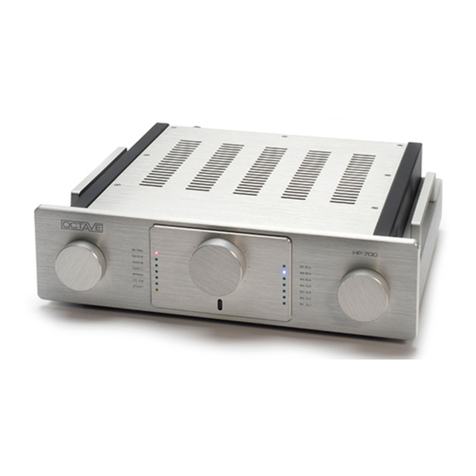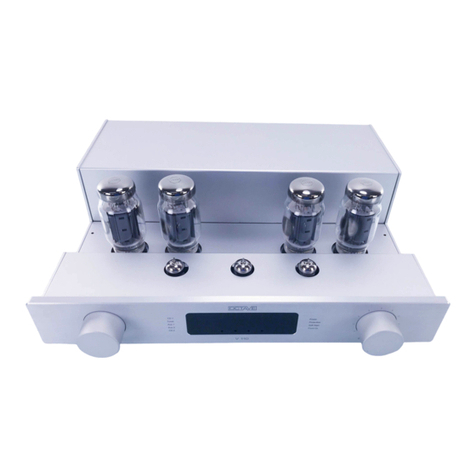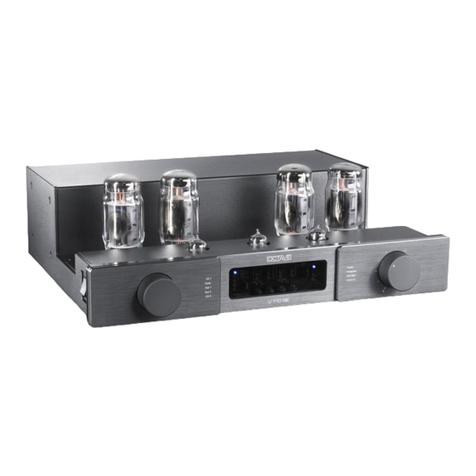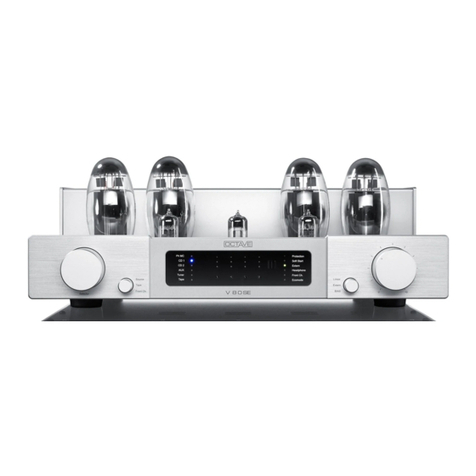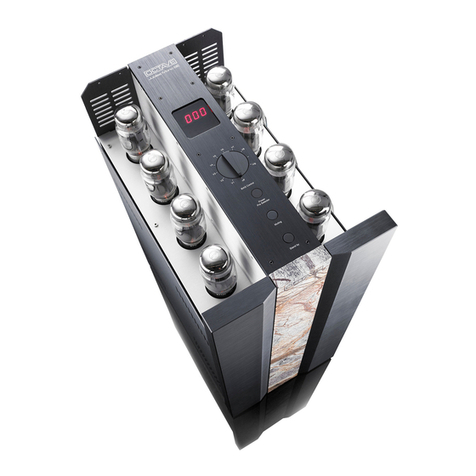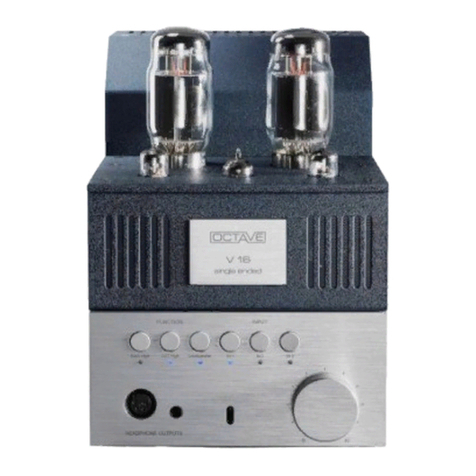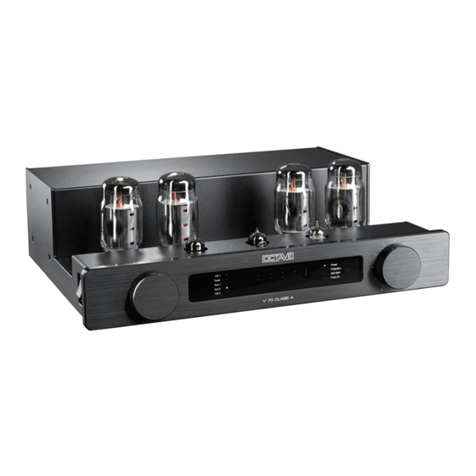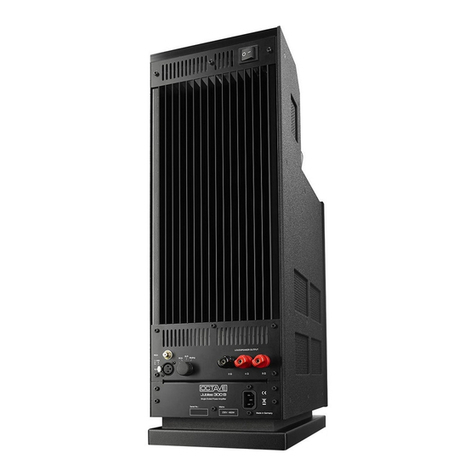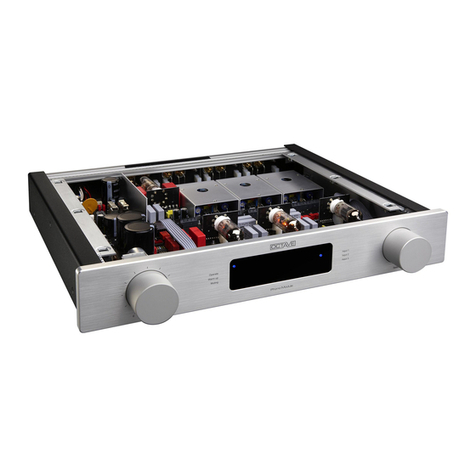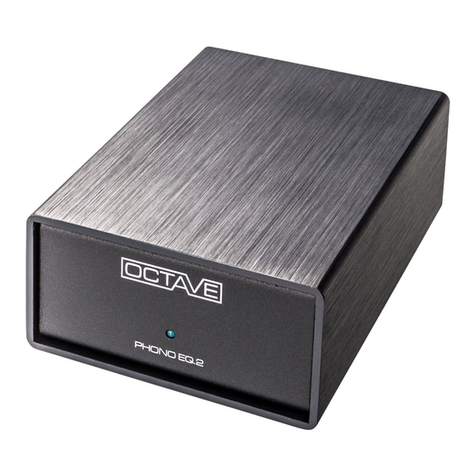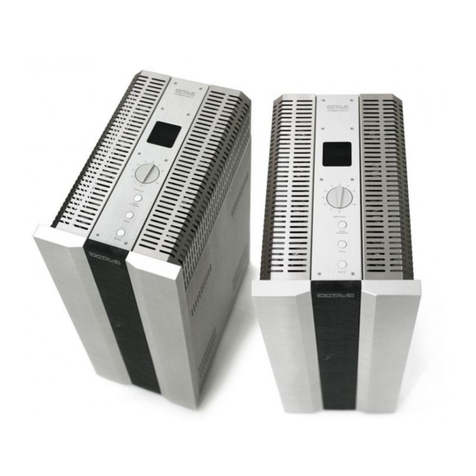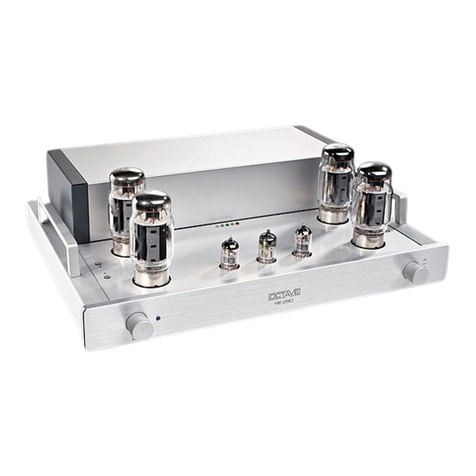
4
1. DISCRIPTION HP 500 MK3
The HP500 is being built since 1987. Many details were improved and a lot of changes took
place through the years and made the sound of the HP 500 even more attractive. For
example, today the MK III-version is always equipped with an external power supply. The
XLR-output with trafo-balancing and a further designed phono-part are options, that make
the HP 500 to one of the most universal tube preamplifiers of our time. Of course, older
versions can be updated.
What is special about the HP 500?
• First of all, the HP 500 is equipped with our self-designed Octave-circuitry-technology,
that is responsible for the exceptional sound and technical qualities.
The special thing about the Octave-circuitry-technology is the combination of
modern semiconductors with the tube. This combination makes it possible, always
to keep the tube in an optimal operating limit and thereby use the whole sound
potential. Disturbing characteristics of conventional tube concepts, like hum-
interference, magnetic field disturbances and high output resistance, are
eliminated.
• Further more, the manufacturing quality of the HP 500 is perfect, this can also be seen in
the stable full-aluminium chassis with low resonance. The massive cinch-sockets make it
possible to connect even thick NF-wires with large plugs.
Every product of Octave is built in individual construction in Germany and is subject
to a 100 % control. The final inspection is completed by a 48 hour burn-in-test.
• In addition, the HP 500 is equipped with a lavish special power supply, that was newly
designed for the HP 500 especially.
The power supply of the HP 500 fulfils complex functions: On the one side, it sees
to a constant sound quality by keeping off mains disturbances and by creating
constant working conditions due to electronic voltage stabilisation. On the other
side, the built-in control logic guarantees the highest possible use reliability. With
its soft-start-technology, it achieves the theoretically maximal possible life of the
tubes (up to approx. 10 years).
An additional function of the power supply is the protective circuitry, that releases
the output of the HP 500 with a time lag by using a relay. Click disturbances
caused by power failure etc. are therefore absolutely impossible. Transformers are
made-to-measure by ourselves.
